 Cold War spies make waves in the City of Canals. 
The Venetian Affair, which premiered today in 1966, has a rather interesting promo poster. It was painted by U.S. artist Frank McCarthy, who was big in paperback covers early in his career, moved into high-budget movie promos such as James Bond posters, and finally made a mark in realist fine art. We love this piece from him. There's a lot going on. If you check out his effort for You Only Live Twice here you'll see how dense and chaotic his work could be, same as above, where he has people falling off the bridge, off the gondola, and guns being brandished everywhere. In addition, his likenesses of the movie's stars are good. He was a major talent.
The first observation you might make while watching The Venetian Affair is that it would be impossible to make a similar movie in that city today. Nearly four million tourists visited Venice in 2022, making nearly every street—and certainly every site of special historical note—like the mass exodus from a just-completed football game. With that level of humanity about, closing parts of the city or main squares—while maybe possible—would not be practical or economical.
But The Venetian Affair was made back when quiet streets and dark corners existed. Old world architecture always makes for a good spy movie backdrop. That's exactly what you get in this adventure about a mind control drug being used to foment conflict between the U.S. and U.S.S.R. Robert Vaughn stars as a former CIA agent who was fired after he married Elke Sommer, who was suspected of being a double agent. Vaughn never found out whether that was true because he and Sommer were torn apart by turbulent events. But when a bomb blows up a Venice political conference and Sommer is thought to be involved, the CIA drags Vaughn back into its clutches to find Sommer, as well as the crucial clue that might explain the bombing.
Vaughn is a cool and composed actor, any movie with Sommer is one we'll watch, and co-stars Felicia Farr, Luciana Paluzzi, Ed Asner, and the venerable Boris Karloff are all enticements, but we can't say The Venetian Affair is a scintillating example of a Cold War spy flick. It's such a fertile sub-genre, one that produced some of the best movies of 1950s through 1970s. Even against the beautiful Venice backdrop it mostly falls flat due to a screenplay that never hits any highs. But that doesn't mean you shouldn't watch it. Though it lacks highs, it also lack any serious lows. You can spend your time worse ways. Plus—Sommer. What more do you need?
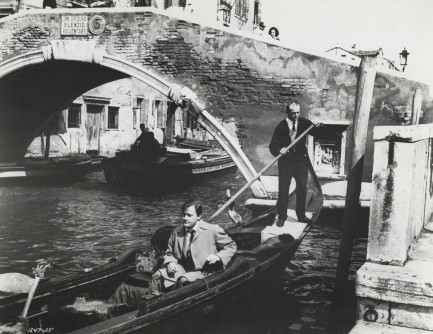 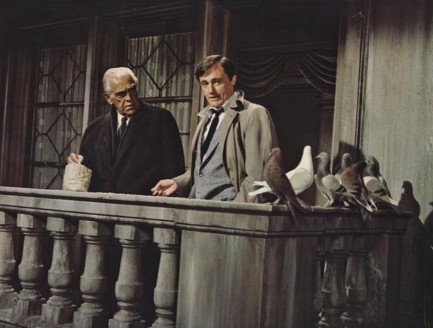 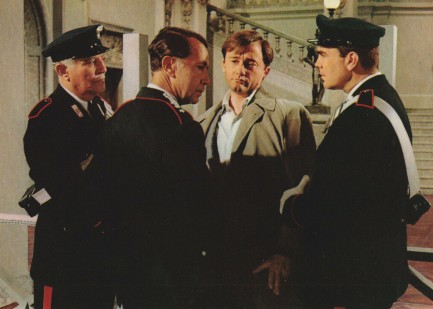     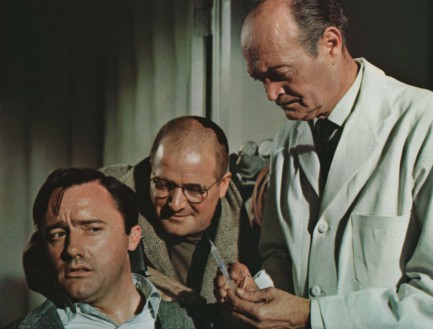    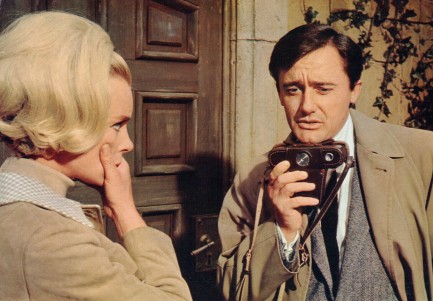 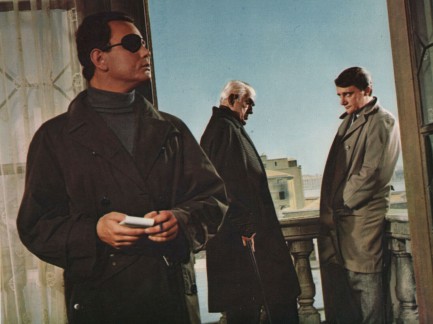  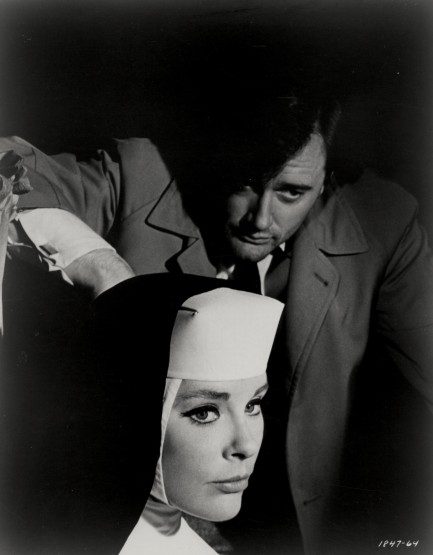 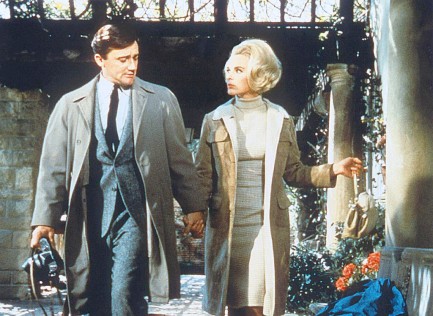  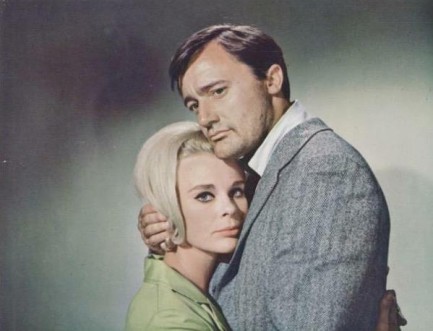 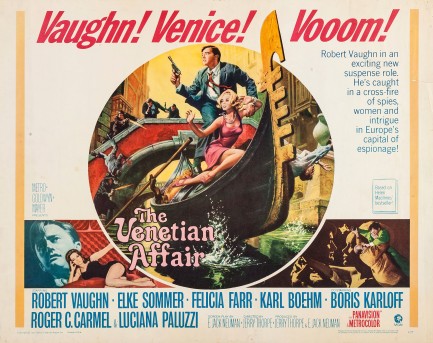 
 Albert Camus' fatal 1960 auto accident may have been a KGB assassination. 
Italian author Giovanni Catelli has just published a book that claims French writer Albert Camus was assassinated by the KGB, rather than dying in an auto accident, as largely believed. When you say the words “Cold War intrigue,” we're all in, so the story caught our eye. Catelli's theory, which he first began airing in 2011, is that the KGB silenced Camus because he was a globally famous figure who made a habit of criticizing the Soviet Union. The order was allegedly given by Dmitri Shepilov, the USSR’s minister of internal affairs, after Camus slammed him in the French newspaper Franc-Tireur in March 1957. Camus died in 1960, so the killing took three years to come to fruition, according to Catelli.
His book length argument, La mort de Camus, is getting white hot press right now, however it's very interesting to look back at contemporary articles about the crash. Camus was riding as a passenger in a car driven by his publisher Michel Gallimard, with Gallimard's wife Janine and their daughter Anne in the rear seat. Michel Gallimard died, but his wife and daughter survived to 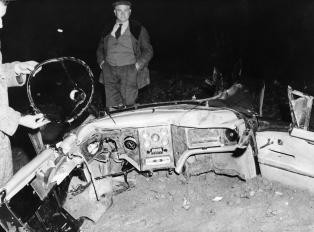 describe the crash. Michel was driving fast and had been told to slow down, and had drunk wine at dinner. describe the crash. Michel was driving fast and had been told to slow down, and had drunk wine at dinner. A gander at the wreckage of the heavy Farcel Vega HK500 attests to its speed. We checked the various articles popping up online and found none that mentioned either the velocity of the car or the drinking of the driver, but that's how the internet works—a fantastic claim circles the world five times faster than anything resembling balance or a fact check.
Catelli, though, has an answer for the reckless driving theory—the Soviets had attached a device to the car that would puncture a tire only in the event of sufficient speed. If the Soviets came up with the device described, it would not kick in without the added ingredient of driver haste, which often happens in conjunction with alcohol consumption, which in turn is a near certainty when talking about French people, all of which means the chances of a crash with muddied circumstances were pretty high. The device, if it ever existed, was certainly clever. It would be like a device that tied your shoelaces together, but only if you went downstairs in a rush, and you happened to live in a fourth floor flat with a balky elevator.
Catelli's belief that Camus was disposed of via assassination is bolstered by the fact that the car he was riding in somehow careened off a stretch of straight road thirty feet wide. Nobody described Michel Gallimard trying to dodge a hedgehog or pothole, so despite speed and possible drunkenness, some unforeseen factor seems required to send the vehicle into the weeds. On the other hand, three years is a long time to enact a death plot. We've seen Yankees and Red Sox fans patch their shit up in less time. But let's move this death from the settled bin into the mysterious bin, which is where we like everything to be anyway. Camus, the famed absurdist, once wrote that, “There can be nothing more absurd than to die in a car accident.” And if Catelli is correct, nothing can be more convenient either. 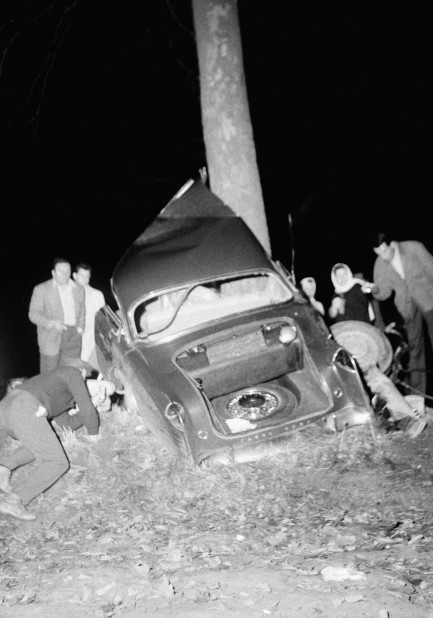 
 Ban the bomb! The other side's bomb, we mean. 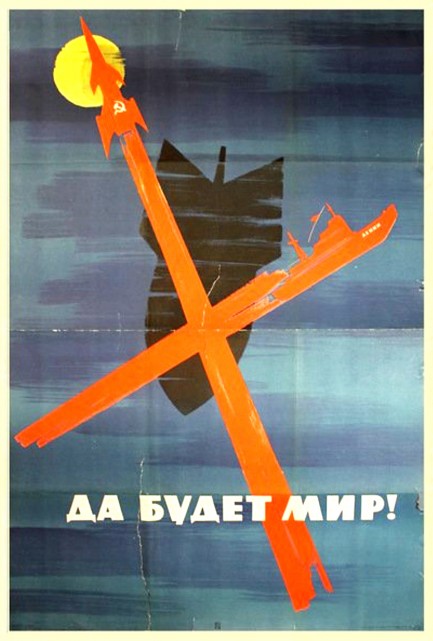
Soviet painter Nikolai Litvinov was a prolific producer of political art during the Cold War. Above you see one of his efforts—an anti-nuclear poster from printers Sovetsky Khudozhnik with text that reads: “May There Be Peace!” This is from 1959, but we've seen some purported to be from 1961, so if that's the case these were probably made throughout the early Cold War. Blaming the other side for the nuclear arms race was of course the same strategy employed by the U.S. We're going to get back to Litvinov shortly. In the meantime, you can see more Soviet propaganda here, some U.S. propaganda here, and a mixture from several countries here.
 Every move you make, every step you take, they’ll be watching you... from inside a catfish. 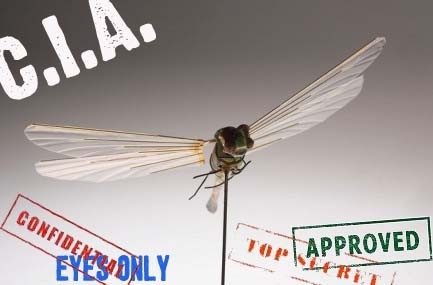
We just couldn’t let this one pass. The CIA set up YouTube and Flickr pages this week at which you can learn everything about the agency they ever wanted you to know. For instance, you can have a laugh at some of the devices their tech eggheads cooked up during the Cold War, including an intelligence gathering dragonfly and a remote controlled catfish named—wait for it—Charlie. That’s hilarious, you see, because Charlie was a tuna on those old Starkist… What’s important is that the CIA, that wellspring of deadly coups and dirty wars in far-flung corners of the globe, also has a cuddly side, which the YouTube page is presumably supposed to showcase to the public, even as the egghead section is busily working on better, smaller catfish so compact they can swim right up your urethra and beam your thoughts to a central computer located in Virginia. Disturbingly, as of this writing most of the links on the YouTube page don’t work. We tried them, and quoth the raven: “404.” Which means, maybe they aren’t links at all. Or maybe it’s all part of a plan to make us civilians think the CIA is incompetent, and then, just when we least suspect, here come the nano-catfish up our pee holes to paste links into our brains. to a central computer located in Virginia. Disturbingly, as of this writing most of the links on the YouTube page don’t work. We tried them, and quoth the raven: “404.” Which means, maybe they aren’t links at all. Or maybe it’s all part of a plan to make us civilians think the CIA is incompetent, and then, just when we least suspect, here come the nano-catfish up our pee holes to paste links into our brains. But we digress. Back to the YouTube page—even if some of the links don't work, the main link to cia.gov does, and we were pleasantly surprised to find that there’s a kid’s section, which we’re currently scouring for a waterboarding set-up we can mail-order for use on some troublesome local teens, or failing that, some electrified genital clamps because, well, these kids are really a pain. Anyway, you can check out the CIA Flickr page here. Or don’t. The page is interesting, but the choice is yours. We aren’t suggesting a course of action one way or the other. Doh! Our subtle reverse psychology has got even us confused.
|
 |

The headlines that mattered yesteryear.
1927—Mae West Sentenced to Jail
American actress and playwright Mae West is sentenced to ten days in jail for obscenity for the content of her play Sex. The trial occurred even though the play had run for a year and had been seen by 325,000 people. However West's considerable popularity, already based on her risque image, only increased due to the controversy. 1971—Manson Sentenced to Death
In the U.S, cult leader Charles Manson is sentenced to death for inciting the murders of Sharon Tate and several other people. Three accomplices, who had actually done the killing, were also sentenced to death, but the state of California abolished capital punishment in 1972 and neither they nor Manson were ever actually executed. 1923—Yankee Stadium Opens
In New York City, Yankee Stadium, home of Major League Baseball's New York Yankees, opens with the Yankees beating their eternal rivals the Boston Red Sox 4 to 1. The stadium, which is nicknamed The House that Ruth Built, sees the Yankees become the most successful franchise in baseball history. It is eventually replaced by a new Yankee Stadium and closes in September 2008. 1961—Bay of Pigs Invasion Is Launched
A group of CIA financed and trained Cuban refugees lands at the Bay of Pigs in southern Cuba with the aim of ousting Fidel Castro. However, the invasion fails badly and the result is embarrassment for U.S. president John F. Kennedy and a major boost in popularity for Fidel Castro, and also has the effect of pushing him toward the Soviet Union for protection.
|

|
|

It's easy. We have an uploader that makes it a snap. Use it to submit your art, text, header, and subhead. Your post can be funny, serious, or anything in between, as long as it's vintage pulp. You'll get a byline and experience the fleeting pride of free authorship. We'll edit your post for typos, but the rest is up to you. Click here to give us your best shot.

|
|
























 describe the crash. Michel was driving fast and had been told to slow down, and had drunk wine at dinner.
describe the crash. Michel was driving fast and had been told to slow down, and had drunk wine at dinner.





 to a central computer located in Virginia. Disturbingly, as of this writing most of the links on the YouTube page don’t work. We tried them, and quoth the raven: “404.” Which means, maybe they aren’t links at all. Or maybe it’s all part of a plan to make us civilians think the CIA is incompetent, and then, just when we least suspect, here come the nano-catfish up our pee holes to paste links into our brains.
to a central computer located in Virginia. Disturbingly, as of this writing most of the links on the YouTube page don’t work. We tried them, and quoth the raven: “404.” Which means, maybe they aren’t links at all. Or maybe it’s all part of a plan to make us civilians think the CIA is incompetent, and then, just when we least suspect, here come the nano-catfish up our pee holes to paste links into our brains.



































































